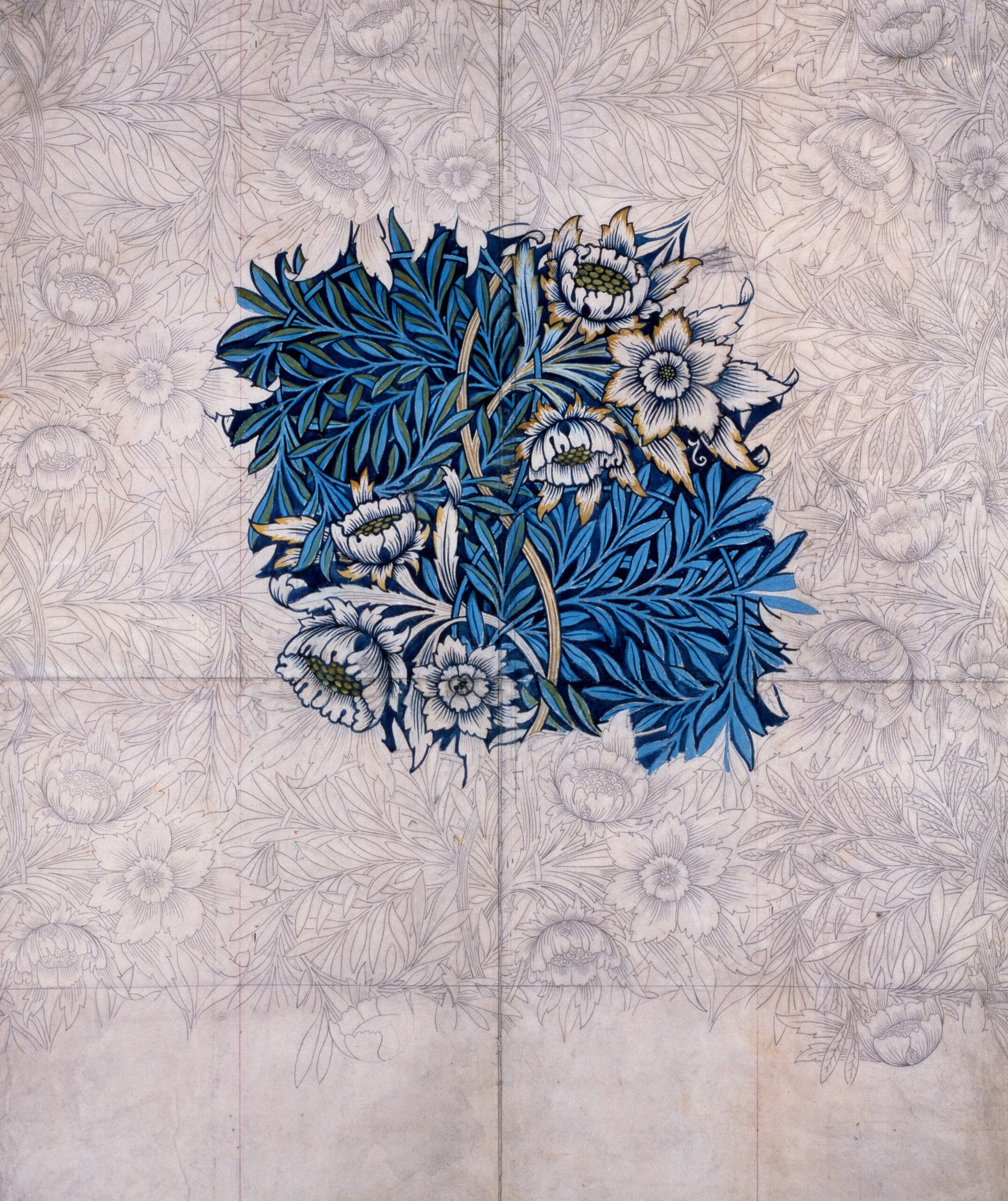Acrylic paints, a widely popular choice among artists and professionals alike, have a fascinating history. Developed as a result of extensive scientific research and experimentation, these versatile paints have significantly impacted the world of art. In this article, we will explore the timeline of when acrylic paints were first developed and how they have revolutionized the artistic process. From their innovative origins in the mid-20th century to their enduring presence in modern art, discover the captivating story behind the creation of acrylic paints.
Overview of Acrylic Paints
Acrylic paints are a versatile and popular medium used by artists around the world. They are made up of pigments suspended in acrylic resin, creating a durable and quick-drying paint. Acrylic paints offer a wide range of characteristics and can be used in various art forms and applications.
Definition
Acrylic paints are a type of water-based paint that contains pigments suspended in an acrylic polymer emulsion. The word “acrylic” refers to the type of resin used in the paint, which gives it its unique properties. Acrylic paint can be diluted with water and dries quickly to create a flexible and durable surface.
Characteristics
Acrylic paints have several distinguishing characteristics that set them apart from other types of paints. One of the main advantages of acrylic paints is their fast drying time, which allows artists to work quickly and layer colors without waiting for extended drying periods. Acrylic paints also have excellent color pigmentation, providing vibrant and intense hues. They are known for their long-lasting qualities, making them suitable for both indoor and outdoor applications. Additionally, acrylic paints have a water-soluble feature, which means they can be easily cleaned up with water while still wet.
Common Uses
Acrylic paints are used in various art forms and applications due to their versatility. They are commonly used on canvas, paper, wood, and other surfaces. Acrylic paints can be used for paintings, mixed media art, murals, sculptures, and crafts. Artists of all skill levels, from beginners to professionals, utilize acrylic paints for their wide range of techniques and effects. Additionally, acrylic paints are also utilized in industrial applications, such as automotive coatings, textiles, and signage.
Predecessors of Acrylic Paints
Before the development of acrylic paints, artists relied on other types of paints to express their creativity. The predecessors of acrylic paints include oil-based paints, watercolor paints, and gouache.
Oil-based Paints
Oil-based paints have been used for centuries and were the dominant medium for artists until the advent of acrylic paints. These paints consist of pigments suspended in an oil medium, usually linseed oil. Oil-based paints have a slow drying time, allowing artists to work with the paint for extended periods and blend colors on the canvas. They are known for their rich and lustrous finish, but the drying time and toxic fumes associated with oil-based paints present some challenges.
Watercolor Paints
Watercolor paints are another traditional medium that utilizes pigments suspended in a water-soluble binder, such as gum arabic. Watercolor paints are transparent and are best suited for creating delicate and translucent washes of color. They are commonly used in illustrations, landscapes, and detailed artwork. Watercolor paints have a unique quality that allows artists to build up layers of color and create subtle gradients.
Gouache
Gouache, often referred to as opaque watercolor, is similar to watercolor paints but contains higher levels of pigmentation and an added white chalk binder. Gouache dries to a matte finish and can be reactivated with water even after drying. It provides an opaque and vibrant color, making it suitable for bold and solid applications. Gouache is commonly used in illustration, design, and decorative art.

This image is property of images.unsplash.com.
The Invention of Acrylic Paints
The invention of acrylic paints marked a significant milestone in the world of art and paint manufacturing. This section delves into the development of acrylic resin, the interest of paint manufacturers, and the first commercial production of acrylic paints.
Development of Acrylic Resin
The development of acrylic resin can be traced back to the early 20th century when German chemist Otto Röhm discovered polymethyl methacrylate (PMMA). Röhm’s research on the synthesis and polymerization of acrylic esters led to the creation of a transparent and durable material. This new material, commonly known as acrylic glass or plexiglass, opened avenues for various applications, including the potential use as a binder in paint.
Paint Manufacturers’ Interest
The unique properties and versatility of acrylic resin caught the attention of paint manufacturers in the mid-20th century. The ability to create a water-based paint that offered fast drying times, excellent color pigmentation, and durability intrigued the industry. Paint manufacturers saw the potential of acrylic paints to revolutionize the art world and provide an alternative to traditional oil and watercolor paints.
First Commercial Production
In the 1950s, the first commercially available acrylic paints were introduced to the market. The pioneers in acrylic paint production were Leonard Bocour and Sam Golden, who founded Bocour Artist Colors in the United States. Bocour and Golden developed their own formulations using acrylic resins and pigments. Their brand, now known as Golden Artist Colors, became one of the leading manufacturers of acrylic paints.
Important Milestones in the History of Acrylic Paints
The history of acrylic paints is marked by significant milestones and advancements in both research and adoption by artists. The following milestones highlight key developments during different decades.
1920s: Synthetic Polymer Research
In the 1920s, significant strides were made in the research and development of synthetic polymers, including acrylic resins. Scientists and chemists explored the possibilities of acrylic esters and their potential applications across various industries.
1930s: DuPont’s Development
In the 1930s, the chemical manufacturing company DuPont made significant advancements in the development of acrylic resin. DuPont researchers focused on improving the properties of acrylic resins to enhance their stability, transparency, and resistance to weathering.
1940s: WW2 and Industrial Applications
During World War II, acrylic resins found extensive industrial applications. They were used as a material for canopies and glazing on military aircraft due to their optical clarity and durability. This increased usage and understanding of acrylic resin contributed to further advancements in its formulation and quality.
1950s: Acrylic Polymer Dispersions
In the 1950s, the formulation of acrylic paints moved from using powdered pigments to incorporating pigments within acrylic polymer dispersions. This advancement allowed for greater color vibrancy, improved consistency, and better binding properties, further enhancing the quality of acrylic paints.
1960s: Fine Artists’ Adoption
During the 1960s, there was a notable increase in the adoption of acrylic paints by fine artists. Artists recognized the advantages of acrylic paints, such as their quick drying time, versatility, vibrant colors, and durability. Acrylic paints became a preferred medium for many artists, leading to more art materials and colors being developed specifically for acrylic painting.
Recent Years: Advancements and Innovations
In recent years, advancements and innovations in acrylic paint technology have continued, expanding the range of possibilities for artists. Improved pigments, additives, and variations in consistency have allowed artists to experiment with different techniques and achieve unique effects. Specialty acrylic paints, such as metallic, fluorescent, and iridescent colors, have been introduced to further enhance artistic expression.

This image is property of images.unsplash.com.
Contributing Innovators in Acrylic Paints
Throughout the history of acrylic paints, several individuals and brands have played significant roles in their development and popularity. The following innovators have left a lasting impact on the world of acrylic paints.
Otto Röhm
Otto Röhm, a German chemist, is credited with the discovery of polymethyl methacrylate (PMMA), the key ingredient in acrylic resin. His research and invention of PMMA laid the foundation for the development of acrylic paints.
Leonard Bocour and Sam Golden
Leonard Bocour and Sam Golden were instrumental in the commercial production and promotion of acrylic paints. They founded Bocour Artist Colors, now known as Golden Artist Colors, and introduced their formulations of acrylic paints to the market, revolutionizing the art world.
Golden Artist Colors
Golden Artist Colors, founded by Leonard Bocour and Sam Golden, is a prominent manufacturer of acrylic paints. The company continues to produce high-quality acrylic paints and continues to innovate by introducing new products and techniques.
Liquitex
Liquitex is another notable brand in the world of acrylic paints. Founded in the 1950s, Liquitex was one of the first manufacturers to introduce acrylic paints for artists. The brand has a wide range of products, including acrylic paints, mediums, and varnishes, catering to different artistic needs.
Other Notable Brands and Individuals
Many other brands and individuals have contributed to the development of acrylic paints. Winsor & Newton, Sennelier, and Pebeo are well-known brands that offer a variety of acrylic paint ranges. Artists such as David Hockney, Bridget Riley, and Gerhard Richter have also embraced acrylic paints in their work, bringing further recognition and popularity to the medium.
Acrylic Paints’ Impact on the Art World
The introduction and widespread use of acrylic paints have had a significant impact on the art world. Artists have recognized the versatility, range of techniques, and other advantages that acrylic paints offer.
Versatility and Range of Techniques
One of the key reasons for the popularity of acrylic paints is their versatility. Artists can utilize a wide range of techniques with acrylic paints, including layering, glazing, impasto, and various texturing techniques. The quick drying time allows artists to work with different layers and build up color and texture quickly. Acrylic paints can be used transparently, similarly to watercolor, or applied opaquely, like oil paints, providing artists with endless possibilities in their creative process.
Popularity Among Contemporary Artists
Acrylic paints have gained immense popularity among contemporary artists. The qualities of acrylic paints, such as their fast drying time, durability, and vibrant colors, align with the demands of contemporary art practices. The ability to work quickly and achieve desired effects without long drying times allows artists to explore and create in a dynamic and efficient manner.
Advantages over Oil and Watercolor
Acrylic paints offer several advantages over traditional oil and watercolor paints. Unlike oil-based paints, acrylic paints do not require the use of toxic solvents for thinning and cleanup. They can be diluted with water, making them more environmentally friendly and less harmful to artists’ health. Acrylic paints also have a permanence and resistance to fading that surpasses watercolor paints. Additionally, acrylic paints have excellent adhesion properties, allowing them to be used on a wide range of surfaces, including canvas, wood, paper, and even non-traditional materials.

This image is property of images.unsplash.com.
Evolution of Acrylic Paints’ Formulations
Advancements in technology and materials have driven the evolution of acrylic paint formulations over the years. The following factors have contributed to the continuous improvement and expansion of acrylic paints’ capabilities.
Advancements in Pigments
The quality and variety of pigments used in acrylic paints have improved significantly over time. Artists now have access to a broader range of colors, including lightfast and archival-grade pigments. New pigments have been developed, providing enhanced color intensity, color-shifting effects, and metallic finishes.
Inclusion of Additives
Additives are often incorporated into acrylic paint formulations to modify their properties and achieve specific effects. Additives such as extenders, flow aids, and retarders can affect the flow, drying time, and transparency of acrylic paints. This flexibility allows artists to customize their painting experience and achieve desired results.
Variations in Consistency
Acrylic paints are available in different consistencies, ranging from fluid to heavy body. Fluid acrylics have a thin, water-like consistency and are suitable for techniques such as pouring and staining. Heavy body acrylics have a thick and buttery consistency, allowing artists to sculpt and create textured effects. The availability of different consistencies enables artists to explore a wide range of techniques and styles.
Special Effects and Specialty Acrylics
In response to artists’ demands for unique effects and textures, specialty acrylic paints have been developed. These include metallic acrylics, fluorescent acrylics, iridescent acrylics, and other specialty paints. These special effects acrylics provide artists with additional tools to create visually striking and captivating artwork.
Comparison with Other Types of Paints
Acrylic paints differ from other types of paints in various aspects, including their composition, properties, and application techniques. The following comparisons highlight the notable differences between acrylic paints and oil-based paints, watercolor paints, and gouache.
Acrylic vs. Oil-based Paints
Acrylic paints and oil-based paints have distinct characteristics and properties. While both offer vibrant colors, acrylic paints have a faster drying time, making them more suitable for artists who prefer working quickly or utilizing layering techniques. Acrylic paints do not require the use of toxic solvents for thinning or cleanup, unlike oil-based paints. Oil paints have a longer drying time and offer a different quality of transparency and blending capabilities. Each type of paint has its own unique look and feel, and artists often choose between acrylics and oil paints based on their preferred techniques and desired results.
Acrylic vs. Watercolor Paints
Acrylic paints and watercolor paints differ in their composition and application techniques. Watercolor paints are traditionally used transparently, creating delicate and translucent washes of color. They are best known for their ability to create subtle gradients and soft transitions. In contrast, acrylic paints can be used both transparently and opaquely, offering artists greater versatility in terms of layering, texture, and coverage. Acrylic paints dry quickly and have a permanent finish, while watercolor paints remain reworkable even after drying. The choice between acrylics and watercolors often depends on the desired effect and techniques employed by the artist.
Acrylic vs. Gouache
Acrylic paints and gouache share some similarities in terms of their versatile application techniques, but they also have important differences. Gouache, also known as opaque watercolor, offers a solid and opaque finish, providing artists with the ability to create bold and solid applications of color. Acrylic paints can also be used opaquely, but they offer more transparency options as well. Gouache dries to a matte finish, while acrylic paints can dry to various finishes, including matte, satin, or glossy. The choice between acrylic paints and gouache depends on an artist’s desired level of transparency, opacity, and the overall look they wish to achieve.
Acrylic Paint Preservation and Conservation
To ensure the longevity and preservation of acrylic paintings, proper handling, storage, protection, and cleaning techniques are essential. The following guidelines outline measures for protecting and conserving acrylic artworks.
Handling and Storage
When handling acrylic paintings, it is essential to avoid direct contact with fingers or hands, as oils and dirt from the skin can transfer onto the painting’s surface. Artwork should be supported by the sides when moved to prevent damage. When storing acrylic paintings, they should be kept in a dry environment away from direct sunlight to prevent fading.
Protection from Light and Moisture
Exposure to direct sunlight and moisture can significantly damage acrylic paintings. Ultraviolet (UV) filtering glazing can be used to protect paintings from fading caused by harmful UV rays. Humidity control is also crucial, as excessive moisture can lead to mold growth or warping of the canvas. Using dehumidifiers or humidity control systems in storage areas can help maintain stable environmental conditions.
Cleaning and Restoration
Acrylic paintings require regular cleaning to remove dust and dirt that can accumulate over time. Soft brushes or microfiber cloths should be used to gently remove surface dirt. If more extensive cleaning is required, professional conservators experienced in handling acrylic art can perform the task using appropriate cleaning agents and techniques. Restoration may be necessary if the artwork has suffered damage or deterioration.
Future Developments in Acrylic Paint Technology
Acrylic paint technology is continually evolving, driven by advancements in materials and increasing demands for sustainable and durable art materials. The following areas hold potential for future developments in acrylic paint technology.
Nanotechnology Applications
The integration of nanotechnology with acrylic paints holds great promise for future advancements. Nano-sized particles can enhance the properties of acrylic paints, such as improving color intensity and lightfastness, enhancing durability and resistance to aging, and even introducing new functionalities, such as self-cleaning or anti-microbial properties.
Sustainable and Environmentally Friendly Alternatives
The growing concern for environmental sustainability has led to increased efforts in developing eco-friendly alternatives in paint manufacturing. Future developments may focus on reducing the environmental footprint of acrylic paints by incorporating renewable or bio-based materials, reducing or eliminating toxins and volatile organic compounds (VOCs), and exploring sustainable production processes.
Improved Durability and Stability
Efforts to improve the durability and stability of acrylic paints may result in the development of paints that are less prone to cracking, yellowing, or fading over time. Advances in polymer chemistry and formulation techniques could lead to acrylic paints that maintain their vibrancy and integrity for extended periods, ensuring the longevity of artwork.
In conclusion, acrylic paints have come a long way since their inception, revolutionizing the art world with their versatility, vibrant colors, and durability. From the development of acrylic resin to the introduction of commercial acrylic paints, the journey of acrylic paints has been marked by significant milestones and the contributions of pioneering individuals and brands. Acrylic paints continue to evolve, with advancements in pigments, additives, and formulations expanding the creative possibilities for artists. The impact of acrylic paints on the art world is evident through their widespread adoption, versatility, and advantages over other types of paints. As technology and materials continue to progress, the future of acrylic paint technology looks promising, with potential developments in nanotechnology applications, sustainability, and improved durability. The legacy of acrylic paints as a transformative medium will undoubtedly continue to shape the art world for years to come.



